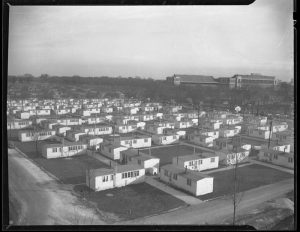This paper is part of the Student Researcher Series which showcases research students have conducted using resources in the Student Life and Culture Archives. If you’re a student who is interested in sharing your research on our blog, please contact us.
Joseph Porto is a senior in history and anthropology at the University of Illinois. This paper was written for History 498:Research and Writing Seminar taught by Professor Leslie Reagan. Joseph presented his research at the Ethnography of the University Initiative Conference in December 2015.
At the University of Illinois at Urbana-Champaign, (UIUC, U of I) the coedification of the residence halls was administered from the ground up. Students on campus lobbied for new policies and crafted the “Proposed Undergraduate Residence Hall Flexible Living – Master Plan” (henceforth referred to as the Master Plan for convenience) in the summer of 1970, which, after careful revisions from the chancellor, university president, and board of trustees, set the guidelines for the university’s first genuinely coed dorms. The process was enacted on a dorm-by-dorm basis, representing the “Flexible” aspect of the program. Since each dorm created its own unique coedification plan, some interesting patterns arose between the male and female houses which serve to highlight larger gender stereotypes and differences typically perceived by early-year undergraduate students in the late sixties and early seventies.
Review of Previous Research
I had an extremely difficult time finding historical works that focused on college students in residence halls and the coedification process that occurred in the sixties holistically. There was one article that seemed to be a complete “History of Coedification,” Brian J. Willoughby’s “The Decline of In Loco Parentis and the Shift to Coed Housing on College Campuses.” Alas, it was not available within the University’s databases or in any libraries that I could request it from (if I wasn’t a poor undergrad I would have paid the $30 to read it). I found numerous articles and archival correspondence between UIUC and other BIG10 universities about the coedification of specific universities, which I used to gauge how progressive U of I was in comparison to the rest of the nation.[1,2,3,4] Generally, UIUC’s coedification policy was implemented around the same time as other public colleges in the area.
I did find other works that discussed coeducation in general, mainly Leslie Miller-Bernal and Susan L. Poulson’s Going Coed: Women’s Experiences in Formerly Men’s Colleges and Universities, 1950-2000.[5] This book provided some useful insight on general attitudes around coeducation in the sixties, but little information or direct quotes I could use about the coedification process. Elizabeth Pleck’s book also helped me understand general attitudes of the time around coedification/coeducation.[6] I also found a plethora of contemporary articles that examined problems that arise in coed vs. single-sex halls.[7,8,9,10] For example, women are more likely to develop eating disorders in coed halls (Berg), males living single-sex dorms have higher GPAs when compared to coed dorms but females living in single-sex dorms do not (Yongyi, et. al.), and living in single-sex dorms does not have any effect on freshman female students’ GPAs, attitudes toward the university, or conduct (Schoemer and McConnell). Continue reading ““An Intimate Revolution in Campus Life”?: Gender Roles and their Impact on Dorm Coedification” →


